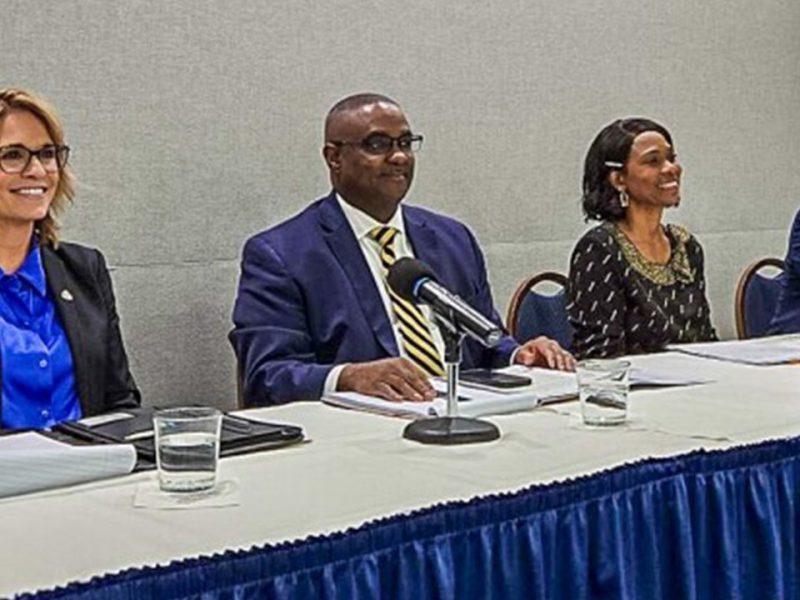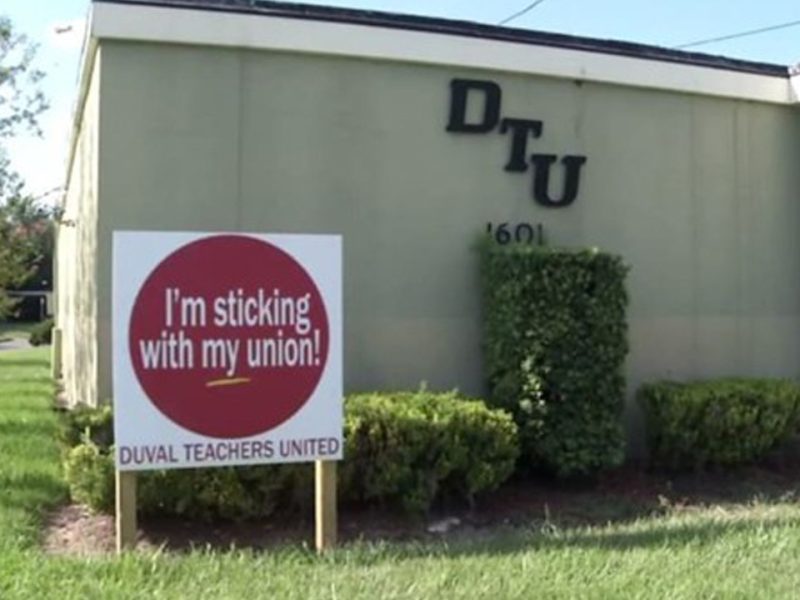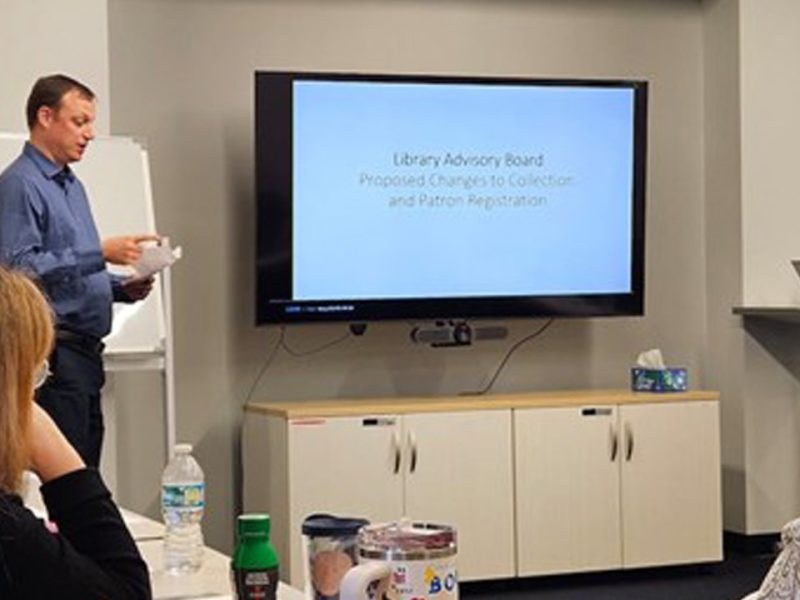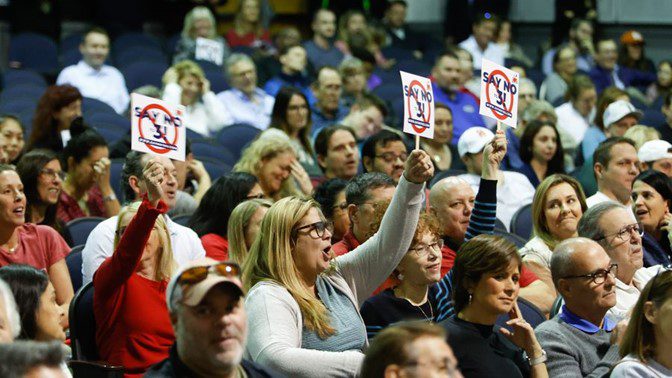
Hillsborough superintendent proposes a more ‘sensitive’ school boundary plan
Tampa Bay Times | By Marlene Sokol | February 9, 2023
Plant High’s attendance boundaries would remain intact, and most changes would take effect in 2024, not this year.
Hillsborough County Superintendent Addison Davis is offering a new proposal for changing school attendance boundaries aimed at allaying many concerns raised by the public in recent weeks.
Under his plan, released during a school board meeting Thursday, boundary changes and resulting school reassignments would not go into effect until August 2024, giving families more time to prepare. The district previously envisioned rolling out the changes this fall.
Davis also proposed laying out specific plans ahead of time for schools that would be closed and repurposed for other uses due to the changes.
And he said attendance boundaries for Plant High and Coleman Middle School would not be altered — a significant change from a consultant’s recommendation, and one that addresses major opposition from parents at both schools.
“This plan is sensitive,” said Davis. “It allows a multiphase approach.” Families, he said, “will get a whole year to visit schools, to take tours, to be part of our choice opportunities.”
In all, about 15,000 students would be affected.
The district also released nearly 1,000 pages of comments that were collected by its consultant, New York-based WXY. The remarks showed frustration among parents and homeowners, especially about a prior option that would move some Plant and Coleman students into lower-graded Pierce Middle and Jefferson High School.
Stacy Hahn, the school board member who represents South Tampa, had voiced support in recent weeks for the Plant and Coleman parents. Two other board members — Jessica Vaughn and Karen Perez — had mounted different concerns about the boundary project, making it unclear if Davis would wind up with the majority he needed to put a plan in place.
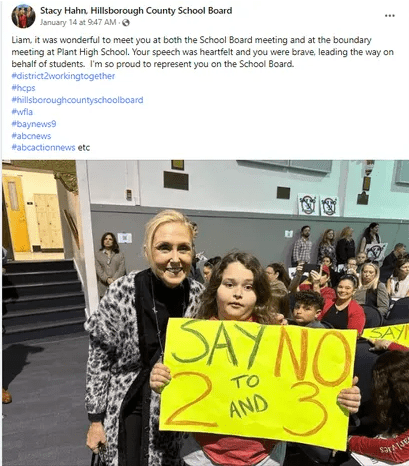
But Davis said in a recent interview that it is not unreasonable to leave Plant alone. Its enrollment, at 103% of capacity, is not nearly as bad as the crowding in some of the district’s other high schools.
“If Plant was at a higher percentage,” he said, meaning 110 or more, “without a doubt we would address this like any other schools in the district.”
And Plant’s enrollment might decrease, as Davis wants to crack down on families who use false addresses to enroll their children there. He proposed a recertification process for all schools that are beyond full capacity.
To address inefficiencies that come with dwindling enrollment elsewhere, Davis proposed closing and “repurposing” Cleveland, Just and Kimbell elementary schools, and McLane and Monroe middle schools. He would house district departments at some of the buildings, including the virtual and choice offices, and the district’s after-school program.
At Just and Monroe, the district would seek to sell or lease the properties to a developer offering affordable housing for staff.
Town ‘N Country Elementary, Jennings Middle and Chamberlain High would remain open, but share space with some district offices and functions. An immigrant service center would open at Town ‘N Country, addressing the needs of new residents from countries including Cuba and Venezuela.
Adams Middle School, a greatly underenrolled school that serves Original Carrollwood and a stretch of north Tampa, would close and then reopen later as a choice college preparatory school. A community-led plan would turn Carrollwood Elementary into a K-8 school.
The only school to close this year would be Just Elementary — a West Tampa school with 283 students, despite a capacity of 600, that cannot afford enough staff to meet student needs. “We’ve got to do something now,” Davis said.
Even after making adjustments, Davis said the district can save $12.8 million yearly if the board approves his proposal. By his calculations, it would leave no school severely underenrolled, and a greater number would be filled at the optimum level of 80% to 95%.
Busing distances would be shortened, accounting for more than a third of the yearly savings.
Transfer numbers in the 28-page proposal assume all affected students are in the schools, even though many parents send their children to private or charter schools instead.
For example: Plans for McLane Middle School, which would be converted to a complex for special education services, describe 2,268 students moving to Giunta, Sligh or Mann middle schools. In reality, McLane now has only 834 students. The rest have used school choice to find other options.
In another concession, the new proposal allows students rising into fifth, eighth, 11th and 12th grades to remain where they are for the 2024-25 year if they have their own transportation.
Moving employees into closed and partly repurposed schools would allow the district to sell some properties and end lease agreements at others. Under one possible scenario, the district’s downtown Tampa headquarters at 901 E Kennedy Blvd. would be leased to a high-rise developer, with the district retaining ownership of the land and occupying several floors in the high-rise.
An email describing the proposal went out Thursday evening as the school board met. Similar to recent meetings, a large number of South Tampa residents were there to speak out against the transfers out of Plant and Coleman.
The board will discuss Davis’ proposal in a workshop Monday at 10 a.m. After that, there will be a round of community meetings before the board votes on Feb. 28 and March 9.
The meetings, all from 6 to 7:30 p.m., are at King High and Mulrennan Middle School on Feb. 20; Webb Middle School on Feb. 22; and Madison Middle and Chamberlain High on Feb. 23.



